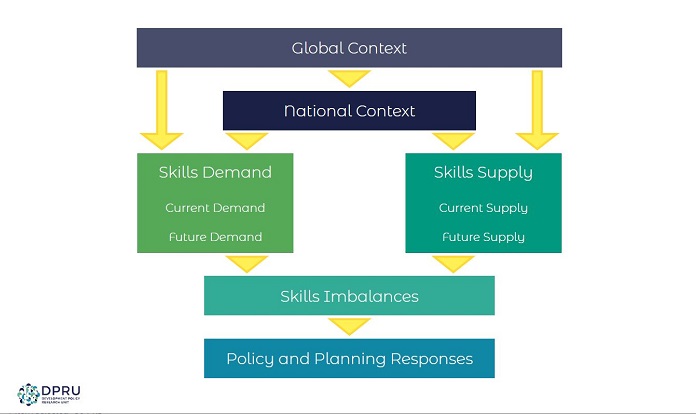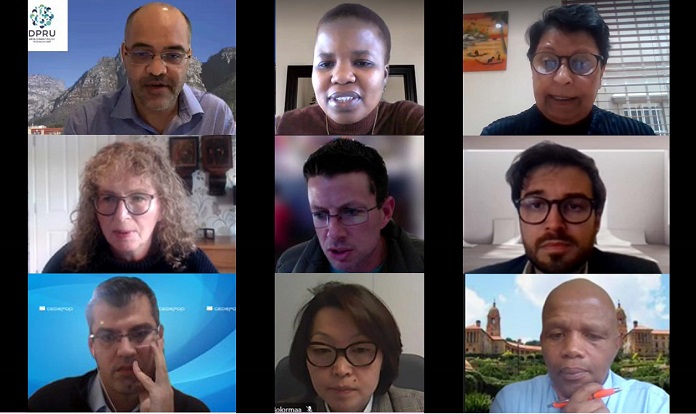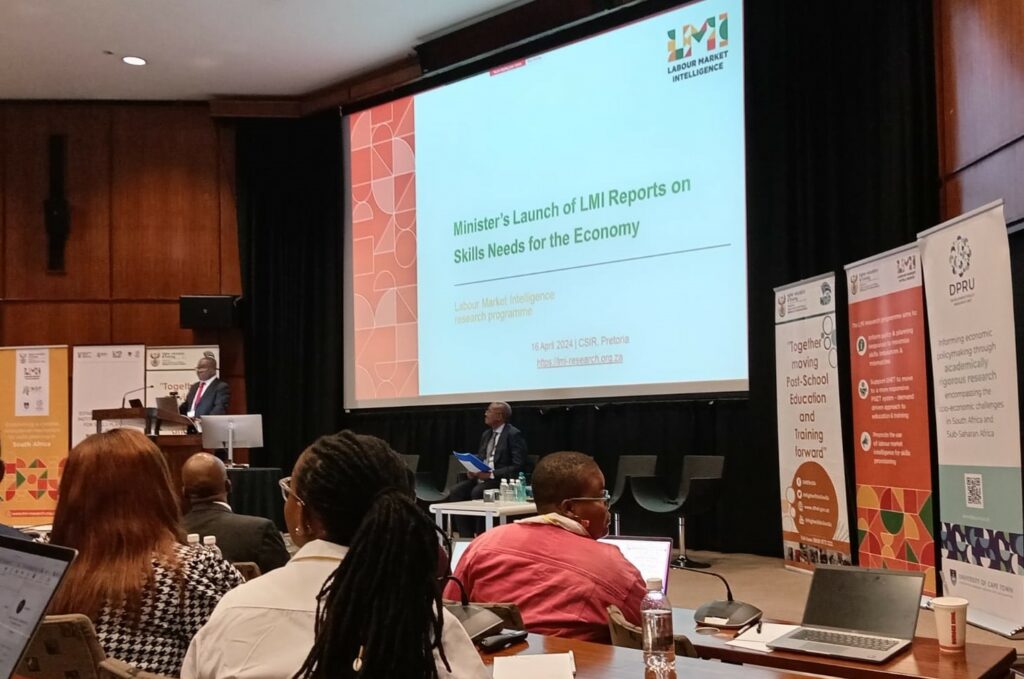Chaired by Prof Haroon Bhorat, Director of the DPRU, this virtual Round Table held on the 6th October 20201, aimed to understand two key things: the framework for skills supply and demand in the South African context, and what we can learn from international experiences in this regard.
Ms Mamphoku Khuluvhe (Director: System Monitoring & Labour Market Intelligence) explained that DHET is developing a conceptual framework for understanding supply and demand of skills in South Africa to provide responsive education and training, ensure that skills are not a constraint to economic growth and development, and address shortages and mismatches. Offering some background and context, she gave a brief historical overview, as well as highlighting international study tours the Department has embarked on in recent years. Three key lessons learnt from these engagements were emphasised: (1) skills supply and demand are used to inform immigration requirements by most countries – it is not used by higher education institutions; (2) skills supply and demand needs to be looked at through multiple lenses, there should be policy driven data collection and analysis; (3) it is important to build trust and have strong engagement with stakeholders.
Dr Hersheela Narsee then noted contention on the issue of the definition of the concept of skills and explained that for the purpose of the framework skills are considered along three dimensions: qualifications, occupations and competencies. Feeding into the conceptual framework presentation, Dr Morne Oosthuizen (Deputy Director, DPRU) focused on the data required and available for labour market intelligence in South Africa. A key weakness noted in respect of data required on the demand side is vacancy data. We also cannot do occupational analysis of the unemployed if they have not worked before. Further, there are challenges with data related to educational attainment of immigrants and emigrants. On the supply side administrative data is noted to be important. Key data gaps are noted in respect of vacancies, migration, and occupational shortages. In addition, the level of granularity required in the data is often not available. This can have important policy ramifications and makes it difficult to ascertain where there are shortages.
The first international speaker, Prof. Jennifer Smith (Warwick University) focused on implementation issues, noting that it is important to understand shortages, and important to boost productivity and growth and reduce inequality, to assist with fund planning. She shared details of the United Kingdom’s Migration Advisory Committee (MAC) methodology explaining that shortages for structural reasons, which are longer term reasons, are distinguished from shorter term shortages. She noted that there is an issue of sample size the more detailed the level of occupation is considered, and that it was important to use stakeholder evidence as well.
She was followed by Dr Bolormaa Tumurchudur-Klok from the ILO who noted that it is important for skills demand and supply intelligence to improve decision making for various stakeholders including government, employers, workers, individuals and students. In terms of looking forward with respect to mismatches, mismatches can be remedied today but for the future it is important to take a strategic view considering economic development in a country.
Dr Luca Marcolin focused on recent developments at the OECD, noting that the stock and flow components of supply are important. However there is a pitfall in just considering the level of educational attainment as the “value” of education changes over the lifetime. An important indicator they are considering is the number (or percentage) of 25 to 64 year olds attending training as a flow indicator as continuous investment in education and training. It measures participation in job-related education and training and when you consider the data for a number of countries it shows that more skilled individuals attend training more than individuals who are less skilled. A second pitfall Luca noteed is related to the issue of qualifications and skills: skills are multi-dimensional and not necessarily captured by qualifications data. He mentioned the PIAAC survey which collects data related to direct assessment of key information processing skills, the use of skills, and a background questionnaire, noting that the PIAAC 2023 survey will include new trend variables and a socio-emotional skills component.
“While we have questions and comments that will hopefully assist with continuous improvement of this process, it feels like the first time, for quite some time, that we have a well joined-up approach to link labour market and demand research to policy”. -Attendee
The final invited international speaker, Dr Konstantinos Pouliakas (Cedefop), suggested that there is no one method or model that is capable of providing a full picture related to skills supply and demand – but that models have to be supplemented to provide policy relevant information. He noted a new exciting development that CEDFOP has started using – the new online vacancy tool for Europe that extracts online job vacancies information. And more recently, CEDEFOP has been looking at using big data for skills intelligence.
Following valuable discussion and debate, Ms Khuluvhe confirmed that DHET is currently finalizing the critical skills list, and working on finalizing the skills strategy by mid-November. The report on skills supply and demand will be published by the end of March 2022. Mr Zukile Mvalo, DDG: Skills for DHET, then concluded the round table event.
Slide presentations are available on Dropbox.




